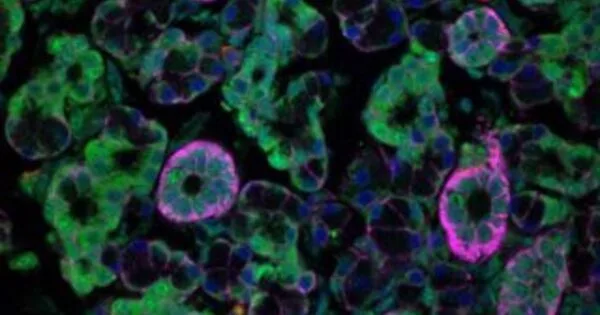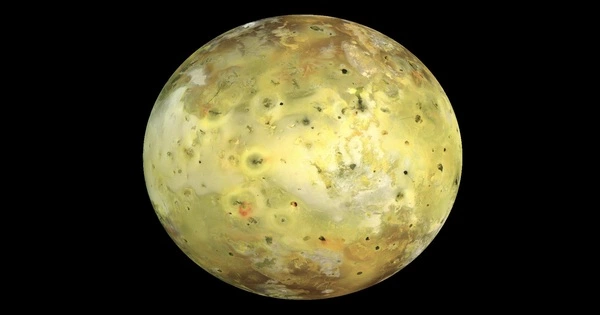Every year, plants emit approximately 100 million tonnes of monoterpenes into the atmosphere. Many fragrances are made up of volatile organic molecules, such as the molecule pinene, which is known for its pine fresh scent. Natural emissions play an important role in our climate because these molecules are highly reactive and can form tiny aerosol particles that can grow into nuclei for cloud droplets. As a result, it is critical for climate predictions to understand how monoterpene emissions will change as temperatures rise.
Many monoterpenes, like pinene, exist in two mirror-image forms: (+) alpha-pinene and (-) alpha-pinene. Both forms of these volatile molecules can be released by plants directly after biosynthesis or from storage pools in leaves. Because the two chiral or enantiomeric forms have identical physical and chemical properties, they are often not considered separately in atmospheric modeling.
However, in a new study published in Nature, researchers from the Max Planck Institute have shown that the two mirror-image molecules are released via different processes in the plant and that they respond differently to stress, particularly drought.
In the future, we should measure and model emissions from chiral molecules separately in order to accurately predict ecosystem responses to stress. This is especially important for the Amazon rainforest, which is expected to experience more droughts in the future, according to climate models.
Joseph Byron
Three months of drought stress in an artificial rainforest
The findings are the result of experiments carried out in an enclosed artificial tropical rainforest within the Biosphere 2 complex in Arizona, which was originally designed to create self-sustaining ecosystems. This facility enabled a team of scientists from the Max Planck Institute for Chemistry, the University of Freiburg, and the University of Arizona to precisely control and measure the forest’s chemical and climatic conditions. The scientists subjected the forest to moderate and then severe drought stress for three months.
Joseph Byron, a PhD student at the Max Planck Graduate School, determined hourly emissions of alpha-pinene, camphene, limonene, terpinene, and isoprene using gas chromatographs. The researchers used isotopically labeled CO2 to track photosynthentic carbon and introduced “heavy” carbon dioxide (13CO2) to the biosphere’s air at specific times to determine when the plants emitted which chiral form. Using a mass spectrometer connected to a chromatograph, the researchers were able to determine which monoterpenes contained heavy carbon atoms and which did not. This revealed which labelled compounds were produced and released instantly by the ecosystem, as well as which unlabeled species were originating from storage pools.

Heavy carbon dioxide provides insight into plant metabolism
“To our surprise, many mirror molecules behaved differently under drought stress,” comments the papers first author Joseph Byron “Thus, (-) alpha-pinene was labeled, whereas (+) alpha-pinene, which we measured simultaneously, was not.” This means that the tropical rainforest ecosystem released (-) alpha-pinene directly after synthesis, while the mirror molecule comes from storage pools in the plant.
More drought leads to diurnal shift in monoterpene emissions
Furthermore, the researchers discovered that as the drought progressed, not only were more monoterpenes released, but the peak in emissions shifted to later in the afternoon, and the plants released more monoterpenes from storage pools. And there could be a reason for this, according to project leader and atmospheric scientist Jonathan Williams: “We suspect that the later release of monoterpenes increases the likelihood that clouds will form over the forest because the warmer it gets during the day, the more vertical mixing of the air increases, allowing the reactive volatiles to reach higher layers of air where they have a greater chance of becoming aerosol particles and eventually cloud condensation nuclei.”
According to Max Planck researcher Williams’ findings from the Biosphere 2 studies, “In the future, we should measure and model emissions from chiral molecules separately in order to accurately predict ecosystem responses to stress. This is especially important for the Amazon rainforest, which is expected to experience more droughts in the future, according to climate models.”
The Max Planck Institute for Chemistry’s group leader in Mainz adds, “I’m fascinated by the fact that we can use air composition to decipher internal, enzyme-driven physiological processes in the forest. This will undoubtedly aid us in explaining effects observed in the real rainforest.” Williams’ team has also been conducting research at the Amazon Tall Tower Observatory ATTO in the Brazilian rainforest.
















